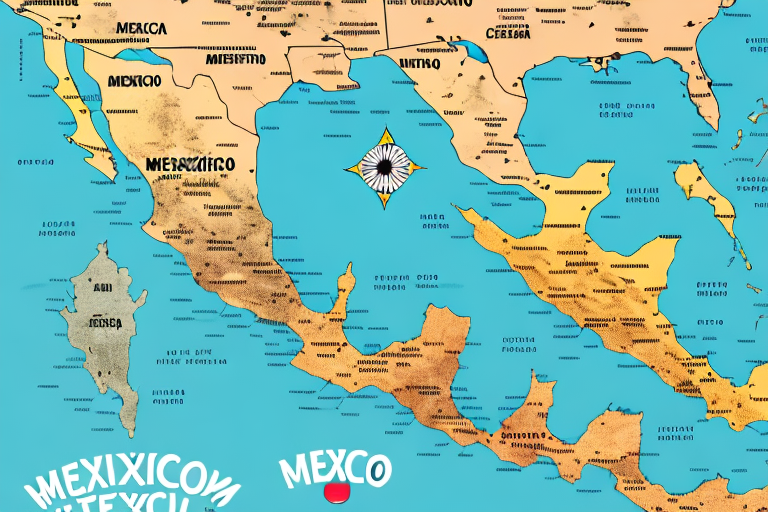Comparing FedEx and UPS Shipping Rates to Mexico
Choosing the right shipping partner is crucial for businesses looking to send packages to Mexico. This comprehensive comparison between FedEx and UPS examines shipping rates, transit times, customs duties, and other key factors to help you make an informed decision.
Overview of FedEx and UPS Shipping Services to Mexico
FedEx Shipping Services
FedEx offers a range of shipping options to Mexico, including express and standard deliveries. With a major hub in Mexico City and a vast network of pickup and drop-off locations, FedEx ensures extensive coverage across the country.
UPS Shipping Services
UPS provides diverse shipping solutions to Mexico, featuring both express and standard services. Their significant presence in Mexico, anchored by a hub in Mexico City and over 2,000 access points nationwide, makes UPS a reliable choice for various shipping needs.
Comparing Shipping Rates and Costs
FedEx Shipping Rates
FedEx's rates for shipping to Mexico are competitive, especially for express services. However, costs can increase with package weight, dimensions, and additional services like insurance or signature confirmation.
UPS Shipping Rates
UPS typically offers slightly lower rates compared to FedEx, particularly for heavier packages. Factors influencing UPS shipping costs include package size, weight, delivery speed, and optional services. It's advisable to use their online calculators to obtain accurate estimates.
Cost Comparison and Value for Money
While UPS may offer lower shipping rates, FedEx provides robust tracking and extensive delivery networks. Businesses should weigh the cost against the value of services offered, such as reliability and delivery speed, to determine the best fit for their needs.
Transit Times and Delivery Speed
FedEx Transit Times
FedEx generally offers faster transit times for shipments to Mexico, especially with their express services. Delivery times can range from 1-3 business days depending on the selected service level.
UPS Transit Times
UPS's standard shipping options to Mexico typically have slightly longer transit times, averaging between 3-5 business days. However, UPS also provides expedited services that can compete closely with FedEx's delivery speeds.
Impact of Transit Times on Business Operations
Faster transit times can enhance customer satisfaction and support just-in-time inventory practices. Businesses must consider their specific delivery requirements when choosing between FedEx and UPS.
Customs Clearance and Documentation
FedEx Customs Services
FedEx facilitates customs clearance with comprehensive documentation support. Ensuring all necessary paperwork is complete can prevent delays and additional fees.
UPS Customs Services
UPS offers robust customs clearance services, assisting businesses in navigating Mexican import regulations. Accurate documentation is crucial to streamline the shipping process.
Compliance with Mexican Regulations
Understanding and adhering to Mexican customs regulations is essential. Both FedEx and UPS provide resources and support to help businesses comply, reducing the risk of shipment delays.
Advantages and Disadvantages of FedEx and UPS
Advantages of FedEx
- Extensive delivery network in Mexico, including remote areas.
- Comprehensive tracking and monitoring tools.
- Faster transit times with express services.
Disadvantages of FedEx
- Higher shipping rates, especially for heavier packages.
- Potential additional fees for customs clearance and documentation.
- Variable customer service quality.
Advantages of UPS
- Generally lower shipping rates compared to FedEx.
- Extensive network with over 2,000 access points.
- Reliable customs clearance support.
Disadvantages of UPS
- Longer transit times for standard shipping options.
- Limited pickup options compared to FedEx.
- Additional fees for certain services.
Calculating Shipping Costs to Mexico
Using FedEx and UPS Online Tools
Both FedEx and UPS provide online calculators to estimate shipping costs based on package size, weight, destination, and selected services. These tools are essential for budgeting and comparing different shipping options.
Factors Influencing Shipping Costs
- Package weight and dimensions.
- Delivery speed and service level.
- Additional services such as insurance and signature confirmation.
- Customs duties and taxes.
Tips for Reducing Shipping Costs
- Optimize package size and weight to lower rates.
- Consolidate shipments to take advantage of bulk discounts.
- Negotiate rates with carriers based on shipping volume.
- Consider third-party logistics providers for better rates.
Customs Duties and Taxes Impact
Understanding Mexican Import Duties
Customs duties and taxes can significantly affect the total shipping cost. It's essential to classify goods correctly and understand the applicable rates to avoid unexpected expenses.
Services Provided by FedEx and UPS
Both carriers offer services to calculate and handle customs duties and taxes, simplifying the process for businesses. Utilizing these services can ensure compliance and timely delivery.
Strategies to Manage Duties and Taxes
- Provide accurate product descriptions and valuations.
- Stay informed about changes in import regulations.
- Use Harmonized System (HS) codes correctly.
Best Shipping Practices for Small Businesses
Choosing the Right Shipping Partner
Small businesses should evaluate the reliability, cost, and service offerings of both FedEx and UPS to determine the best fit for their shipping needs to Mexico.
Leveraging Third-Party Logistics (3PL) Providers
3PL providers can offer specialized international shipping services, potentially reducing costs and improving efficiency for small businesses with limited shipping volumes.
Optimizing Packaging and Shipping Processes
Proper packaging not only protects shipments but also reduces shipping costs. Using lightweight and sturdy materials can minimize expenses and prevent damages during transit.
Conclusion
Both FedEx and UPS offer robust shipping solutions to Mexico, each with its unique strengths and considerations. By analyzing shipping rates, transit times, customs services, and overall value, businesses can select the carrier that best aligns with their operational needs and budget. Additionally, exploring third-party logistics options and optimizing shipping practices can further enhance efficiency and cost-effectiveness.








